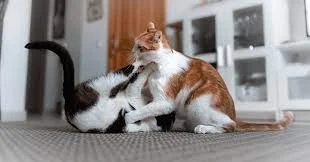For cat owners, one of the most significant decisions is whether to keep their feline friend indoors or let them explore the great outdoors. This choice not only impacts their daily lifestyle but also their health and longevity. In this post, we'll delve into the benefits and risks of both indoor and outdoor living for cats, and explore why there's such a stark difference in life expectancy between the two.
Benefits of Indoor Living:
- Safety from External Dangers: Indoor cats are protected from various threats such as traffic, predators, and other aggressive animals.
- Controlled Health Environment: Being indoors reduces the risk of contracting diseases from other animals and limits exposure to parasites like fleas and ticks.
- Reduced Risk of Accidents: Indoor cats are less likely to suffer from injuries due to fights or accidents.
- Closer Monitoring: It's easier to monitor health and behavior changes in indoor cats, ensuring timely medical attention.
Risks of Indoor Living:
- Lack of Exercise: Indoor cats may lead a more sedentary lifestyle, leading to obesity and related health issues.
- Behavioral Issues: Without proper stimulation, indoor cats can develop stress, anxiety, or destructive behaviors.
- Limited Environmental Enrichment: Cats have a natural instinct to explore and hunt, which can be stifled indoors.
Benefits of Outdoor Living:
- Natural Exercise: Outdoor cats tend to be more active, maintaining a healthier weight and muscle tone.
- Mental Stimulation: The outdoor environment offers a variety of stimuli, satisfying their natural instincts to hunt and explore.
- Behavioral Enrichment: Access to the outdoors can lead to a more content and well-adjusted cat.
Risks of Outdoor Living:
- Increased Exposure to Diseases: Outdoor cats are at a higher risk of infections like FIV (Feline Immunodeficiency Virus) and FeLV (Feline Leukemia Virus).
- Danger from Traffic and Predators: Cars, wild animals, and even other cats can pose significant threats.
- Risk of Theft or Loss: Outdoor cats can become lost or be stolen.
Life Expectancy Differences:
Studies have shown that indoor cats often live significantly longer than their outdoor counterparts. The average lifespan of an indoor cat can range from 12 to 15 years, with many living into their late teens or early twenties. In contrast, outdoor cats have a much shorter average lifespan, often only 2 to 5 years.
Reasons for Life Expectancy Differences:
Reasons for Life Expectancy Differences:
- Exposure to Harm: Outdoor cats face numerous hazards such as traffic, predators, and human cruelty.
- Health Risks: The risk of contracting diseases and parasites is much higher for outdoor cats.
- Nutritional Uncertainty: Outdoor cats may not have consistent access to nutritious food.
- Stress: The life of an outdoor cat can be stressful, impacting their overall health and wellbeing.
Choosing between keeping your cat indoors or allowing them outdoor access is a complex decision that requires weighing the benefits and risks. While indoor living generally promises a longer, healthier life due to controlled environments and reduced risks, it's crucial to ensure that indoor cats receive adequate exercise, mental stimulation, and love. For those who prefer to let their cats experience the outdoors, supervised outings or secure cat enclosures can provide a safer alternative. We have a video on YouTube about this very same issue you might enjoy. You can view it here.
Ultimately, the decision should be based on the individual cat's personality, health, and the owner's ability to provide a safe and enriching environment.







No comments:
Post a Comment